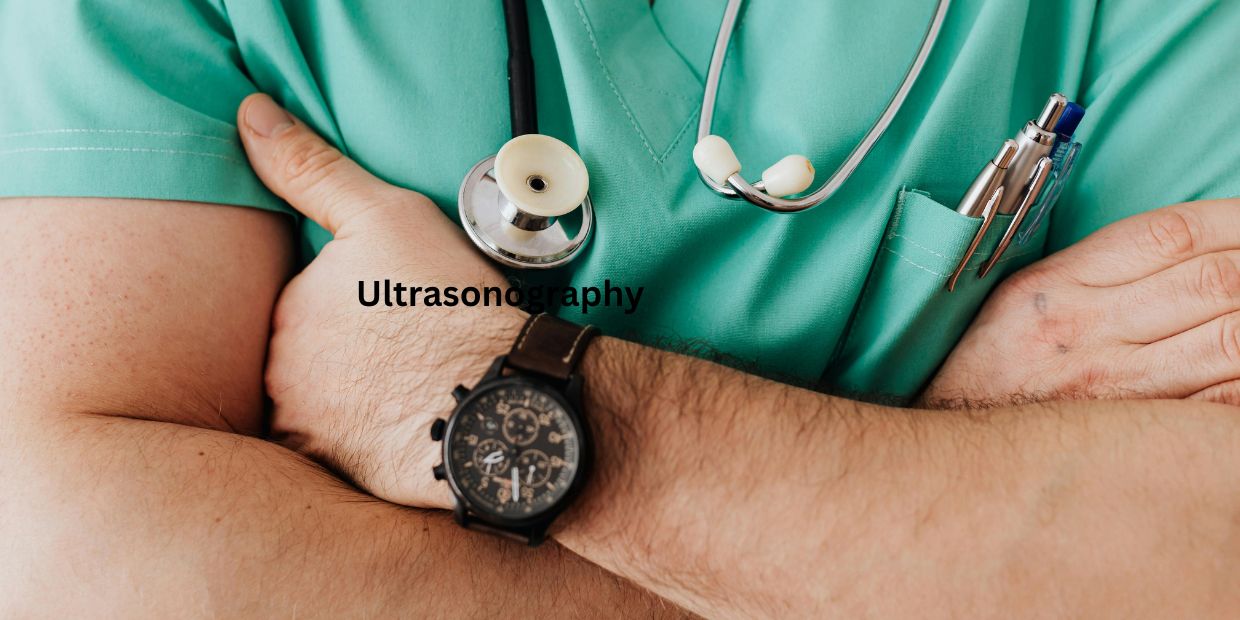- Ultrasonography is a type of medical imaging that uses high-frequency sound waves to produce images of internal organs and other tissues.
- It is also called ultrasound or sonogram.
- It does not use x-rays or radiation so it is very safe and painless.
- It can diagnose and treat various diseases and conditions such as gallbladder disease blood flow breast lumps and more.
How Is Ultrasonography Done?
- Depending on the area to be examined you may be asked to prepare by fasting drinking fluids or emptying your bladder.
- A gel is applied to your skin over the area to be examined to ensure good sound transmission.
- A handheld device called a transducer is moved over the area to send and receive sound waves.
- The sound waves are converted into electrical signals and then into images by a computer.
- The images are displayed on a monitor and recorded as a digital computer image.
What Are The Types And Uses Of Ultrasonography?
- There are different types of ultrasonography such as Doppler 3D 4D and endoscopic ultrasonography.
- Each type has its own advantages and limitations depending on the purpose and the body part to be imaged.
- Some common uses of ultrasonography are:
- Obstetric ultrasound: to monitor the development and health of the fetus and the placenta.
- Echocardiogram: to evaluate the structure and function of the heart and the blood vessels.
- Abdominal ultrasound: to examine the liver gallbladder spleen pancreas kidneys and other organs.
- Pelvic ultrasound: to assess the uterus ovaries prostate and bladder.
- Breast ultrasound: to detect and characterize breast lumps and cysts.
- Thyroid ultrasound: to identify nodules and tumors in the thyroid gland.
- Musculoskeletal ultrasound: to visualize muscles tendons ligaments and joints.

What Are The Benefits And Risks Of Ultrasonography?
- The benefits of ultrasonography are:
- It is noninvasive and does not expose you to radiation.
- It is relatively inexpensive and widely available.
- It can provide real-time and dynamic images of the organs and tissues.
- It can help guide procedures such as biopsies and injections.
- The risks of ultrasonography are:
- It may not provide clear or complete images of some organs or tissues especially if they are obscured by gas bone or fat.
- It may not detect small or deep lesions or abnormalities.
- It may cause some discomfort or pressure during the examination.
- It may have some unknown effects on the fetus or the tissues due to the heating or cavitation of the sound waves.
Also Read This: Techem
Conclusion
- Ultrasonography is a safe and effective imaging test that uses sound waves to create images of internal organs and other tissues.
- It can be used for various purposes such as diagnosis treatment and monitoring of different diseases and conditions.
- It has some limitations and risks but they are generally outweighed by the benefits.
- If you have any questions or concerns about ultrasonography you should consult your doctor or radiologist.
What is the difference between 3D and 4D ultrasonography?
The difference between 3D and 4D ultrasonography is that 3D ultrasound produces static images of the internal organs and tissues while 4D ultrasound produces live-streaming videos of the same.
3D ultrasound can help diagnose external and internal abnormalities of the fetus such as cleft lip or heart defects.
4D ultrasound can show the motion and behavior of the fetus such as yawning or kicking.
However 4D ultrasound is not recommended for non-medical purposes as the long-term effects of prolonged ultrasound exposure are unknown.
3D and 4D ultrasound have different applications and costs depending on the purpose and the body part to be imaged.
Also Read This: Resources for Education and Skills Development
Is it safe to have a 4D ultrasound?
According to most studies 4D ultrasounds are considered safe for both you and your baby. There is no proven evidence that they cause any harm.
You should consult your doctor or radiologist before having a 4D ultrasound to make sure it is necessary and appropriate for your situation.
Can I get a 4D ultrasound at any time during pregnancy?
According to the web search results the best time to get a 4D ultrasound is between 27 and 32 weeks of pregnancy.
This is when the baby facial features are more developed but there is still enough space in the womb for clear imaging.
For multiple pregnancies the best time is between 20 and 26 weeks. If you get a 4D ultrasound too early or too late you may not get the best views of your baby.
You should consult your doctor or radiologist before having a 4D ultrasound to make sure it is necessary and appropriate for your situation.
How long does an ultrasound take?
Mayo Clinic a typical ultrasound exam takes from 30 minutes to an hour.
However the duration may vary depending on the area or organ that is being examined. Some ultrasounds may take as little as 15 minutes or as long as 45 minutes.
For More Details: zxtech
Is there any preparation required before the exam?
- For an abdominal ultrasound you may be asked to fast for eight to 12 hours before the exam.
- For a pelvic ultrasound you may be asked to drink a lot of water and hold your urine before the exam.
- For a prostate or transrectal ultrasound you may be asked to do a cleansing with an enema before the exam.
- For an ultrasound-guided biopsy you may be asked to stop taking certain medications such as aspirin blood thinners or vitamin E for a week before the.
What is the device that converts electrical current into sound waves and vice versa during an ultrasound?
The device is called a transducer. It is a small hand-held device that is placed on the skin or inserted into the body.
What is the name of the gel that is applied to the skin before an ultrasound?
The gel is called ultrasound gel. It helps prevent air pockets which can block the sound waves that create the images. It is a safe water-based gel that is easy to remove from skin and clothing.
What is the name of the procedure that uses an endoscope and a transducer to view the heart or other organs inside the body?
The procedure is called endoscopic ultrasonography. The endoscope is a viewing tube that can be passed down the throat or through the stomach. The transducer is attached to the endoscope and sends and receives sound waves.

